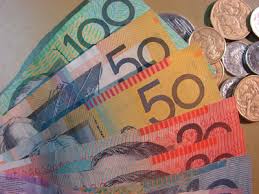 WELLINGTON/SYDNEY: The Australian dollar struggled to find a foothold on Monday, having posted its biggest weekly fall in over a month with nerves still raw days after the central bank governor described the currency as "overvalued by any metric".
WELLINGTON/SYDNEY: The Australian dollar struggled to find a foothold on Monday, having posted its biggest weekly fall in over a month with nerves still raw days after the central bank governor described the currency as "overvalued by any metric".
The Aussie was last down 0.1 percent at $0.9354 after falling as far as $0.9342. It fell 0.7 percent last week and has shed more than 1.5 percent since hitting an eight-month high of $0.9505 a week ago. "Our technical strategists note that the break below nearby support in the 0.9350 area signals a further short-term squeeze to the downside," analysts at Barclays wrote in a note to clients.
"In their view, the risk is for a move lower towards a confluence of support in the 0.9200 area. We look for buying interest near there to keep the range of the past three months intact and the overall focus higher, toward targets near 0.9760."
The New Zealand dollar was faring no better on Monday, trading with a soft tone at $0.8721, versus $0.8746 at the end of last week.
Only a few weeks ago, it had risen to a three-year peak of $0.8795, but repeated failure to push through $0.8800, and softer commodity prices, have prompted some profit-taking, traders said.
Both relatively high-yielding Antipodean currencies still have one thing going for them: low global volatility, which in turn is supporting the appeal of carry trades.
"With volatility still very low, there is little incentive for those who are picking up the positive carry from exiting that trade," said Bank of New Zealand strategist Raiko Shareef in a note.
This is particularly true for the kiwi, given the Reserve Bank of New Zealand is expected to raise interest rates later this month, the fourth time in as many reviews.
A quarter point hike will take the cash rate to 3.5 percent.
There is also some demand expected from offshore investors needing to settle the purchase of the New Zealand government's new 2027 bond issued last week.
Near-term support for the kiwi is seen at $0.8700 with resistance initially at $0.8760 ahead of the near-three year high of $0.8795 touched last month.
The Antipodean currencies were also softer against the euro and yen.
The Aussie bought NZ$1.0726, up from a three-month trough of NZ$1.0633 plumbed last Thursday.
The key piece of New Zealand data this week is Tuesday's quarterly business sentiment survey, which is expected to ease back from the 14-year high touched in the first quarter.
In Australia, employment data on Thursday will be closely watched.
Economists polled by Reuters on Friday expect the economy to have created 12,000 jobs in June after shedding 4,800 in the previous month.
New Zealand government bonds traded with a slight bid tone, pushing yields a tick lower across the curve.
Australian bond futures were still in consolidation mode after a recent rally to multi-month peaks ran out of steam.
The three-year contract was at 97.320 versus a 10-month high of 97.380 set last week.
The 10-year contract traded at 96.380, under a 12-month high of 96.470 reached late last month.




























Comments
Comments are closed.